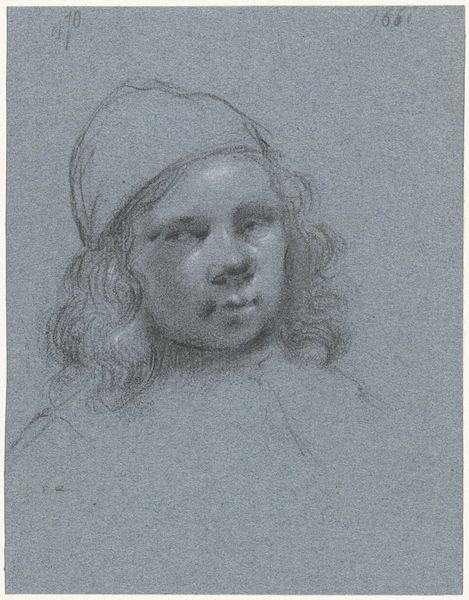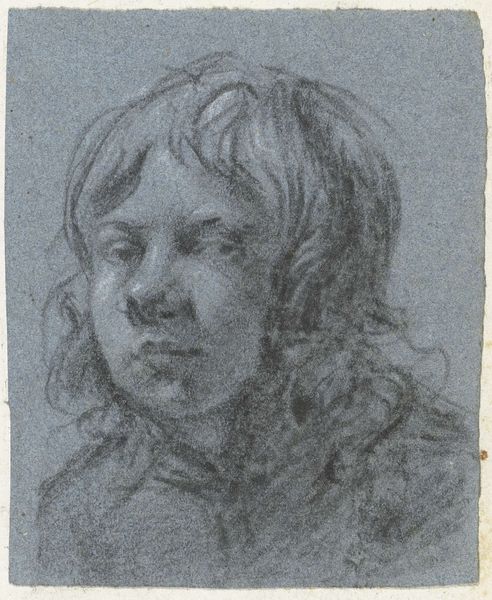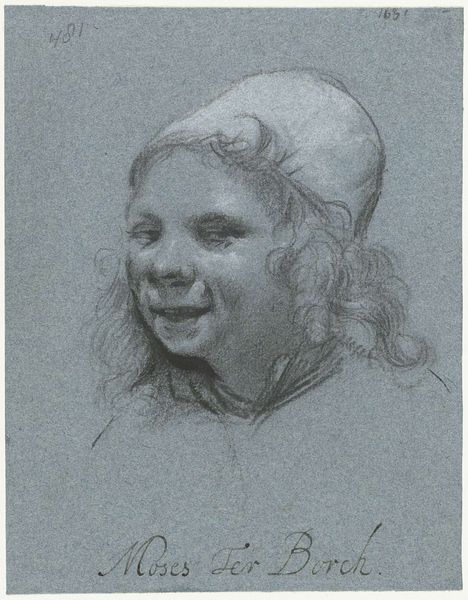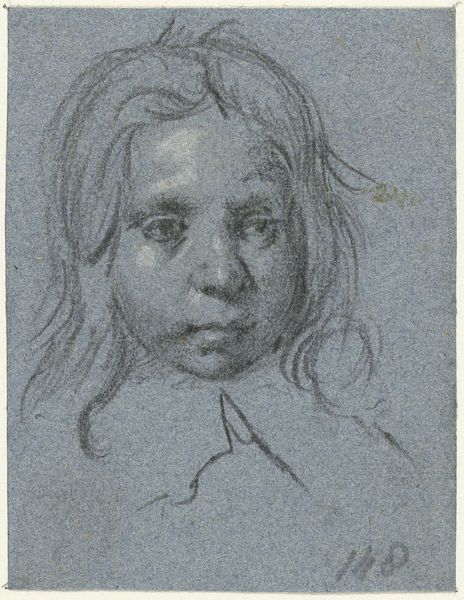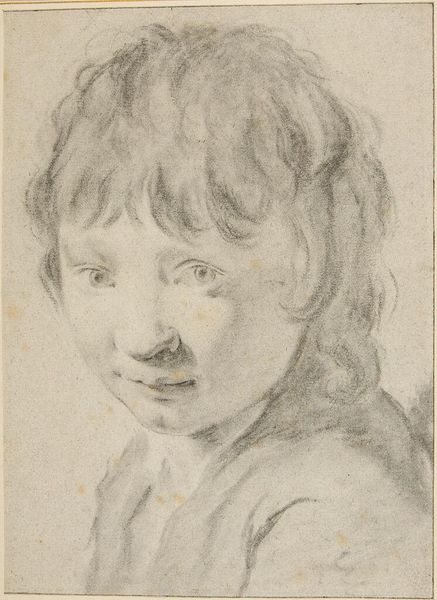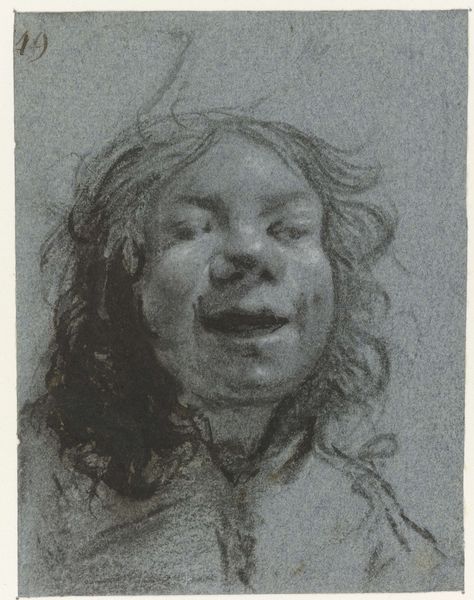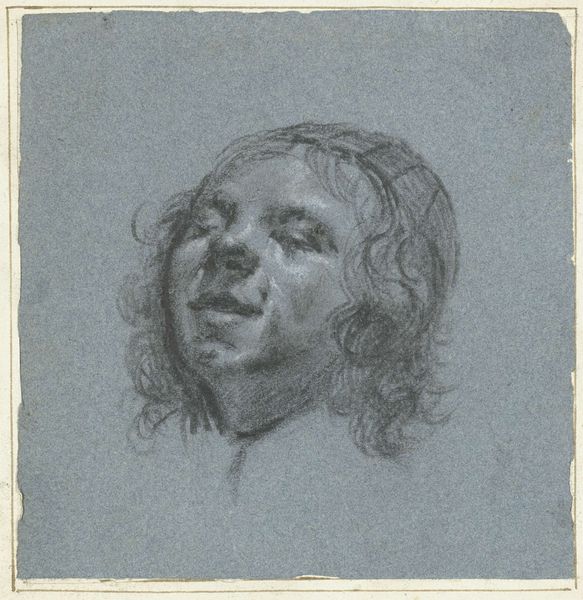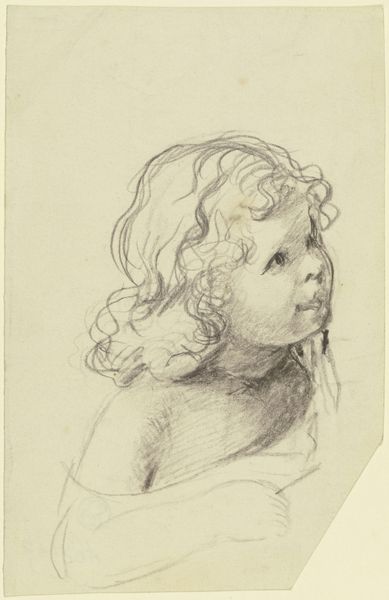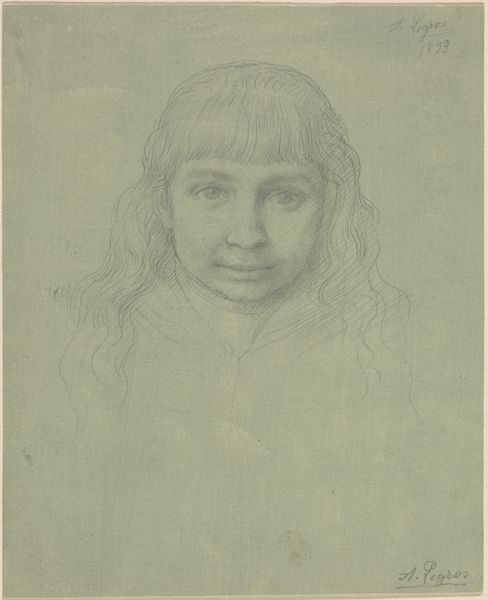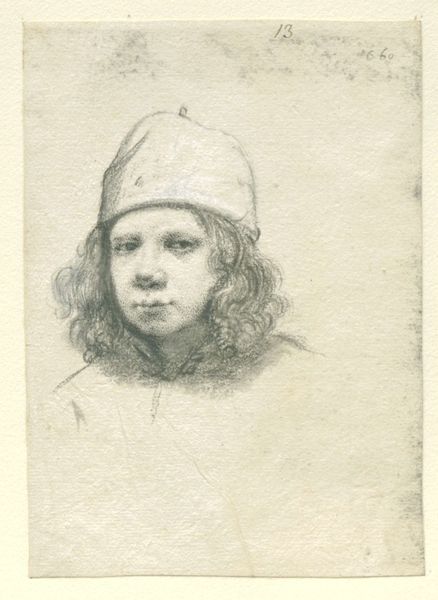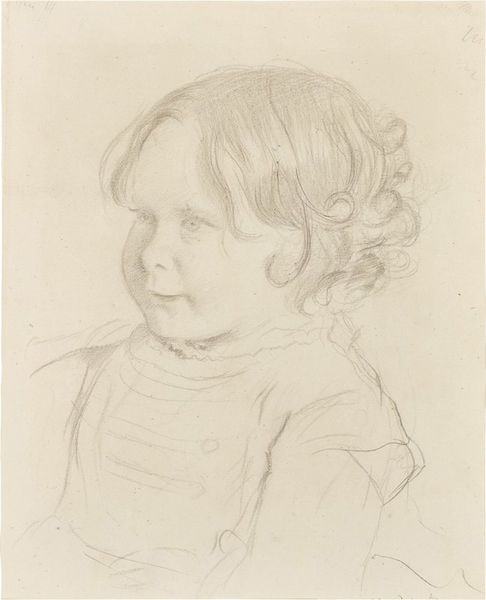
drawing, pencil
#
portrait
#
pencil drawn
#
drawing
#
amateur sketch
#
facial expression drawing
#
light pencil work
#
self-portrait
#
baroque
#
pencil sketch
#
figuration
#
portrait reference
#
pencil drawing
#
pencil
#
limited contrast and shading
#
portrait drawing
#
portrait art
#
realism
Dimensions: height 105 mm, width 100 mm
Copyright: Rijks Museum: Open Domain
Curator: This drawing, held in the Rijksmuseum, is a self-portrait by Moses ter Borch, created sometime before 1661. It offers a glimpse into the artist's own perception of self. Editor: My initial feeling is that it's informal, like a captured moment rather than a studied pose. The grey paper and pencil lend it a casual air, and the smile suggests a moment of amusement or self-deprecation. Curator: The slight smile is intriguing. It’s an uncommon expression in formal portraiture of the era, isn't it? Often portraits served to project status and dignity, yet here we see a hint of personality. Could it be that this was intended for personal reflection, not public display? Editor: Precisely! It’s the texture and technique that captivate me—the way the pencil is lightly applied, almost sketched. The support, a tinted grey paper, allows for quick shading and a sense of depth despite the simplicity of the medium. Think about access to materials then, the portability of this medium makes the artistic process quite immediate. Curator: Yes, and if you look at the handling of the hair, there’s an almost symbolic suggestion of freedom, mirroring perhaps an inner life or the artistic temperament itself. Hair as an allegory for personal autonomy emerges often in art. Editor: Interesting point about the hair. Also notice how he uses line weight to define form, giving volume to the face despite the minimalist approach. The materiality is humble, yet the skill is evident in the economy of means. One could imagine he kept this in a private sketchbook that went along with him. Curator: It speaks to a different function of art. While his brother Gerard was painting polished genre scenes for wealthy patrons, Moses seems to have explored a more intimate visual language, less about status and more about interiority. What’s lasting here, beyond representation, is this symbolic gaze of recognition, which time itself doesn't fade. Editor: A fleeting smile immortalized in graphite and paper – a material snapshot of a human moment that transcends its simple means. I hadn’t considered its connection to his more well-known brother. Curator: This humble drawing opens a window into not only the artist’s appearance but his emotional landscape, one shaped as all things are by social context, but driven by something deeply, irreducibly, personal.
Comments
No comments
Be the first to comment and join the conversation on the ultimate creative platform.
